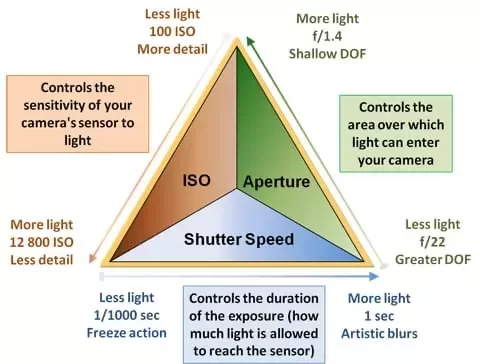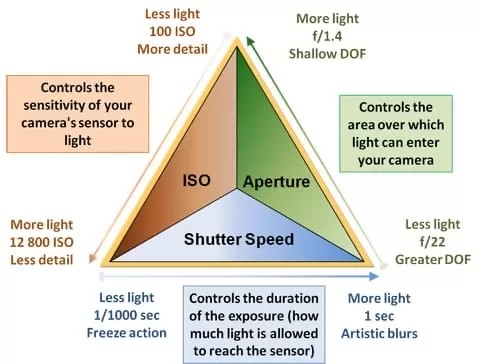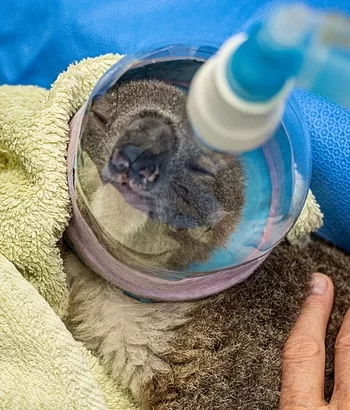In our Master Class Series on Photography, we are Mastering Exposure: Aperture, Shutter Speed, and ISO and the Exposure Triangle.
In the realm of photography, mastering exposure is akin to unraveling a captivating mystery. Among the key elements influencing exposure – aperture and shutter speed – ISO stands as a silent sentinel, often overlooked yet wielding significant influence over the final image. Let’s delve into the interplay between aperture, shutter speed, and ISO, and how each setting contributes to crafting compelling photographs.
If your appreciate our content please visit an advertiser:
Our table shows the relationship between Aperture, ISO and Shutter Speed
| Aperture | ISO | Shutter Speed | |
|---|---|---|---|
| Increase | Narrower aperture (Higher f-stop number) | Increase ISO for greater sensitivity to light | Increase shutter speed to reduce exposure time |
| Decrease | Wider aperture (Lower f-stop number) | Decrease ISO for lower sensitivity to light | Decrease shutter speed to prolong exposure time |
| Impact on Other Settings | Adjustments may be needed to maintain depth of field. | Increasing ISO may introduce more noise/graininess. | May result in motion blur if too slow or freeze motion if too fast. |
This table shows how changes in one aspect of the Exposure Triangle necessitate specific adjustments in the other settings to maintain a balanced exposure and achieve the desired photographic outcome.
Aperture: Painting with Light and Depth
Aperture, the opening in the lens through which light enters the camera, plays a pivotal role in exposure and depth of field control. Measured in f-stops, aperture settings determine the amount of light allowed into the camera, influencing both exposure and creative expression.
- Wider Aperture (Lower f-stop number): Allows more light into the camera, ideal for low-light conditions or achieving a shallow depth of field with a blurred background.
- Narrower Aperture (Higher f-stop number): Restricts the amount of light, suitable for well-lit environments or capturing scenes with greater depth of field.
Shutter Speed: Capturing Moments in Time
Shutter speed dictates the duration for which the camera’s shutter remains open, controlling the amount of light reaching the sensor and capturing motion within the frame. It’s measured in fractions of a second or seconds for long exposures.
- Faster Shutter Speed: Freezes motion, ideal for capturing fast-moving subjects with crisp detail.
- Slower Shutter Speed: Introduces motion blur, conveying a sense of movement or capturing long-exposure shots in low-light conditions.
ISO: Sensitivity to Light
ISO measures the sensitivity of the camera’s sensor to light. While often overshadowed by aperture and shutter speed, ISO serves as a crucial tool for adapting to varying lighting conditions and achieving proper exposure.
- Higher ISO: Increases sensor sensitivity to light, allowing for brighter images in low-light environments. However, it may also introduce more noise or graininess.
- Lower ISO: Decreases sensor sensitivity, resulting in cleaner images with less noise. However, it requires more light for proper exposure in dimly lit situations.


The Interplay of Exposure Triangle: Aperture, Shutter Speed, and ISO
Understanding the relationship between aperture, shutter speed, and ISO empowers photographers to navigate the complexities of exposure and unleash their creative vision. Each setting influences exposure independently, yet their collective harmony determines the overall outcome of the image.
- Aperture Priority Mode: Ideal for situations where depth of field is paramount, allowing photographers to prioritize creative control over the foreground-background relationship.
- Shutter Priority Mode: Perfect for capturing motion or controlling the appearance of movement in images, providing flexibility in freezing action or introducing motion blur.
Harnessing the Power of Exposure
As photographers, mastery of exposure – the delicate balance between aperture, shutter speed, and ISO – is essential for capturing moments that transcend mere pixels and evoke emotions. Whether freezing a split-second moment with a fast shutter speed, painting with light using a wide aperture, or adapting to low-light conditions with ISO, each setting contributes to the visual narrative, guiding viewers through a journey of light and shadow.
Embrace the symbiotic relationship between aperture, shutter speed, and ISO as you embark on your photographic odyssey. Experimentation, intuition, and a willingness to push boundaries will lead you to new realms of creativity, where every exposure becomes a masterpiece waiting to be unveiled.
Further reading
Who owns photographs posted on social media?
Professional Photography in the Digital Era
Navigating the Future of Professional Photography
How Getty Images & Disruptors Changed Photography
The Kiss in Times Square photograph by Alfred Eisenstaedt
Written with the assistance of ChatGPT as a sub-editing tool fact-checked and re-written by a human editor.







